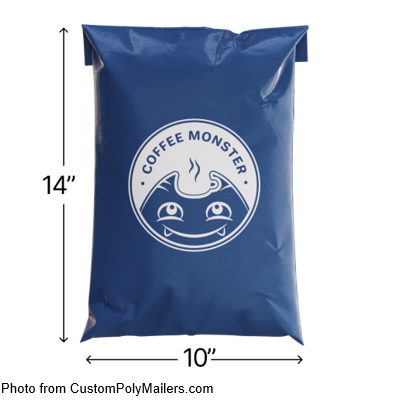Photo from CustomPolyMailers.com
In the fast-paced world of e-commerce, the journey of a package from warehouse shelves to a customer’s doorstep is more than just a logistical step—it’s a silent ambassador for your brand. Custom poly mailers, those lightweight yet resilient packaging workhorses, play a pivotal role in this process. But even the most eye-catching designs can falter if storage, shipping, and compliance aren’t optimized. Let’s dive into the strategies that turn logistical challenges into competitive advantages.
1. The Hidden Costs of Poor Storage: Maximizing Warehouse Efficiency
Storing bespoke polyethylene pouches might seem straightforward, but missteps here ripple across your supply chain. Bulk orders of custom-designed mailers often arrive in pallets or rolls, demanding smart spatial planning.
- Vertical Stacking Solutions: Utilize adjustable shelving to accommodate varying mailer sizes. For compact warehouses, space-saving racks that prioritize vertical storage can free up 30% more floor space.
- Climate Control: Poly mailers are durable, but extreme heat or humidity can weaken seams or adhesives. Maintain a stable environment (ideally 50-70°F) to preserve integrity.
- Inventory Rotation: Adopt a first-in, first-out (FIFO) system. This prevents older stock from languishing, reducing the risk of material degradation.
Pro Tip: Partner with suppliers offering split shipments to avoid overcrowding. Smaller, frequent deliveries align with just-in-time inventory practices.
2. Size Matters: Balancing Protection and Cost in Package Design

Carriers like USPS and DHL use dimensional weight pricing, meaning oversized packages can inflate costs, even if they’re lightweight. Here’s how to strike the perfect balance:
- Right-Sizing Mailers: Audit your top-selling products. If 80% of items fit a 10×13” mailer, avoid defaulting to larger sizes “just in case.”
- Modular Designs: Offer custom-sized poly mailers tailored to product categories (e.g., slim sleeves for apparel, gusseted options for bulky items).
- Weight Distribution: Reinforce stress points (seams, closures) for heavier items. A burst-resistant mailer eliminates the need for excess padding.
3. Navigating Carrier Compliance: Avoiding Costly Penalties
Carrier regulations are a minefield of fine print. Non-compliance can lead to surcharges, delays, or even refused shipments. Key considerations:
- USPS “Package” vs. “Flat” Rules: Mailers under three-quarters inch thick qualify as “flats,” slashing postage costs. Exceeding this threshold reclassifies them as pricier parcels.
- DHL/FedEx Label Placement: Ensure barcodes are affixed to smooth, non-reflective areas. Wrinkles or bubbles can scramble scans, triggering manual handling fees.
- International Shipping: Some countries tax imports based on declared value printed on packaging. Use discreet designs to avoid customs hiccups.
Toolkit: Download carrier-specific shipping guidelines checklists to streamline compliance audits.
4. Smart Integration: Tech-Driven Logistics for Seamless Scaling
Modern logistics isn’t just about physical space—it’s about data.
- IoT Sensors: Embed smart tags in mailer batches to monitor warehouse conditions (temperature, humidity) in real time.
- Inventory Management Software: Sync poly mailer stock levels with order forecasts. Platforms like Cin7 or TradeGecko automate reorder triggers, preventing stockouts.
- Automated Dimensioning Systems: Deploy tools like CubiScan to measure mailer sizes instantly, ensuring accurate carrier rate calculations.
5. Sustainable Logistics: Cutting Costs and Carbon Footprints

Photo by Tima Miroshnichenko on Pexels.com
Eco-conscious logistics isn’t a trend—it’s a demand.
- Biodegradable Mailer Storage: Compostable materials require drier storage than traditional plastics. Invest in moisture-wicking pallet covers.
- Route Optimization: Use tools like Route4Me to cluster deliveries, reducing fuel use and transit times.
- Reusable Transport Packaging: Swap single-use cardboard for collapsible plastic totes when moving mailers between facilities.
FAQs: Addressing Top User Queries
Q: How do I prevent poly mailers from tearing during transit?
A: Opt for reinforced seams and test mailers with weights 20% above your heaviest product.
Q: Can I use custom poly mailers for international shipping?
A: Yes, but ensure designs omit logos or text that could confuse customs. Use universal symbols for fragile items.
Q: What’s the ideal warehouse humidity level for storing mailers?
A: Aim for 40-50% relative humidity to prevent adhesive degradation.
Conclusion: Logistics as a Brand-Building Tool
Optimizing logistics for custom poly mailers isn’t just about cutting costs—it’s about crafting a seamless, sustainable unboxing journey that starts long before the package reaches your customer. By marrying smart storage, carrier savvy, and tech innovation, brands can transform logistical hurdles into moments of silent applause for their operational excellence.







